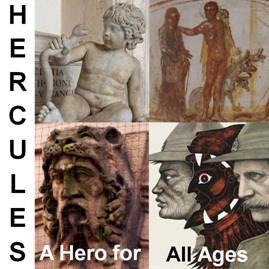HERCULES: A HERO FOR ALL
AGES

Tom Sienkewicz, Minnie Billings Capron Professor of Classics recently
participated in an international conference on the Greco-Roman hero
Hercules sponsored by Leeds University in England, June 24-26, 2013 (http://www.leeds.ac.uk/arts/
The conference brought classical reception specialists together with
scholars from the fields of medieval and later European history, art
history, literature and drama, in order to scope the extent of Hercules’
significance as a cultural figure and to provoke interdisciplinary
discussion of methodological approaches.
There were papers on Hercules’ appropriation by Christianity; emergence
in the Renaissance as the type of virtue; role as political emblem;
particular relevance to France, as supposed forefather of the monarchy
and paradoxical hero of the Revolution; appearance in Victorian Britain;
role as a hero for children; appearance in contemporary popular media
from comic books to the modern Greek press; emigration to Australasia;
re-workings of Sophokles’ and Euripides’tragedies on Hercules’ death and
madness.
An important
aspect of the conference was the involvement of contemporary writers and
artists talking about their Hercules-themed work. This provided a rare
opportunity for academics to interrogate the creators of art-works
featuring the hero, posing questions for which no answer is usually
available – why did the artist choose to focus on Hercules, what
influenced their treatment of the story?
Two writers talked about very different dramas, both produced in 2010:
George Rodosthenous’ “The Wife of Heracles” was a re-working of
Sophocles’ tragedy Trachiniae, while Helen Eastman’s Hercules was a
comedy based on the twelve labours. Marian Maguire’s series of
lithographs and etchings “The Labours of Herakles,” exhibited in New
Zealand 2008-12, aptly casts the hero as a European colonist,
superimposing an image taken from ancient Greek vases onto
nineteenth-century New Zealand landscapes.
Sienkewicz’contribution to this conference was a paper entitled
“Herculean Transformations in Florence” in which he
illustrated the history of Herculean iconography in the history, art and
literature of the city of Florence, Italy, from Late Antiquity through
the Renaissance and into the twentieth century. He provided a brief
chronological overview of selected literary texts from Late Antiquity
and the Renaissance whichhelped to mould or to articulate Renaissance
attitudes towards the hero and then surveys some specific public
representations of the hero in Florentine art.